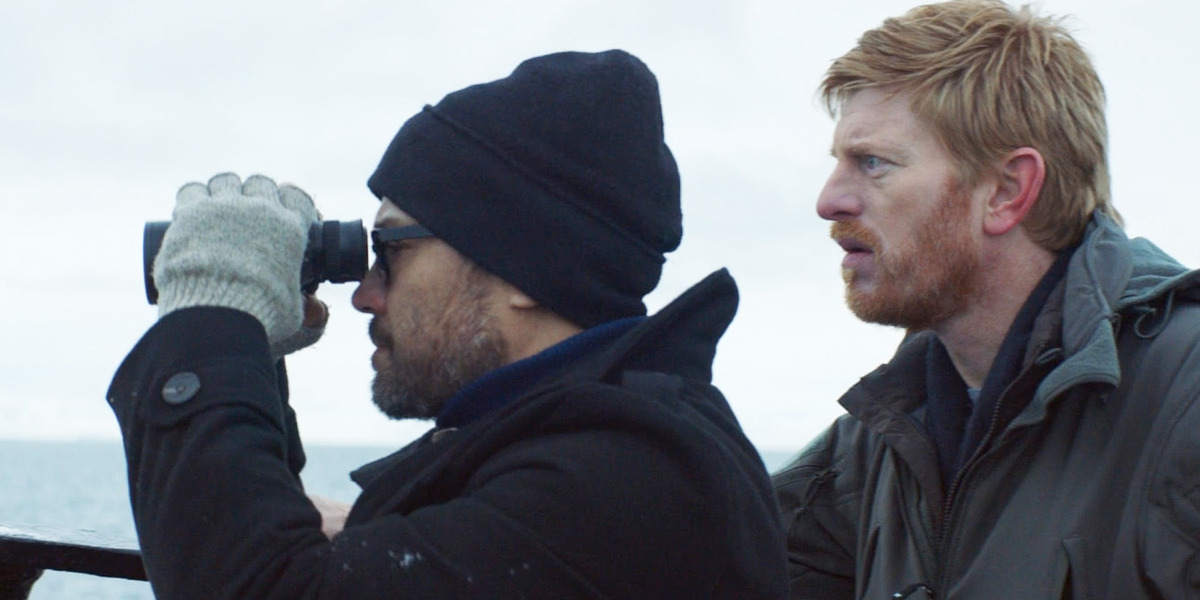‘Arctic Void,’ an indie horror film directed by Darren Mann, charts the journey of three men on a trip through Svalbard that soon turns into an unimaginable nightmare. Following a mysterious power failure, a tourist ship in the Arctic undergoes an inexplicable phenomenon that leads to the disappearance of almost every passenger. Hollywood showmakers and childhood best friends Ray Marsh and Alan Meursault, alongside their cameraman Sean Tibbets, left as the only survivors, try to find a means of escape while battling with the psychological and physical after-effects of the incident.
Rooted in isolation horror, the film blends eerie elements of nature with manufactured terrors and delivers a mystery-filled tale about survival. Ripe with existentialism with a chilling conspiracy at its core, it manages to keep the plotline grounded by maintaining an insulated and contained narrative. Due to the same, viewers must be curious to know if there’s any truth behind the film’s outlandish yet convincing premise. If so, here is everything we know about the ‘Arctic Void’ and its connection to reality.
Arctic Void is Entirely Fictional
‘Arctic Void’ is not based on a true story. Written by Michael Weaver, the lead actor, and based on story ideas by William Paul Jones, Jay Kirk, and Darren Mann, the characters and events explored within the film are entirely fictional. Nevertheless, it’s impossible to ignore the occasional similarity the film’s base premise and the final reveal has to specific real-life incidents and conspiracies.

‘Arctic Void’ revolves around a mysterious plot that results in more than 20 passengers aboard a commercial vessel vanishing without leaving any trace behind. Two of the three survivors left manage to escape a similar fate by a sheer twist of luck, while the third turns out to be the footman in a grand conspiracy. Without giving away more spoilers than necessary, this conspiracy involves an experiment with intentions of mind alteration through vibrations.
Two separate real-life instances, MK-ULTRA and an inscrutable occurrence known as “The Hum,” share a similar framework as the conspiracy presented in ‘Arctic Void.’ MK-ULTRA was a secretive CIA program fueled by paranoia that involved illegal human experiments conducted by chemist Sidney Gottlieb. With MK-ULTRA, Gottlieb subjected numerous people to psychological torture to achieve mind control. The experiment lasted between the 1950s to the late 1960s leading to the death and destruction of countless innocent lives.
On the other hand, The Hum, with less tangible evidence to back itself up, refers to the phenomenon wherein multiple people across time and place claim to hear a constant buzzing noise. Numerous instances of people experiencing The Hum have been reported across the globe. Although anything from gas leaks to simple exaggerated fabrication can be the cause behind The Hum, it has led to the conception of numerous conspiracy theories about government, aliens, and more.
Therefore, it is possible that the film took inspiration from MK-ULTRA’s real-life events and The Hum’s conspiratorial center. Although the film doesn’t claim to take inspiration from either, viewers might spot the similarities between these two instances and the plot that unfolds in ‘Arctic Void.’ The same would lend a sense of realism to the film since the storyline can be connected to reality without much effort.
Other than that, the film’s utilization of isolation horror might help viewers relate to the characters and empathize with their situation. Isolation is an easy and convenient horror tool since loneliness universally brings up feelings of dread and fear within individuals. As such, the narrative effectively sets the characters up for imminent doom by employing a ghost town in the middle of nowhere Norway,
Ultimately, the film ‘Arctic Void’ is not based on real-life events. For the most part, the film’s sense of realism comes from its plausible setting and good payoff. The film also shares some similarities to real-life events, which further helps the narrative ground itself in reality while continuing to be a work of fiction.
Read More: Arctic Void Ending, Explained: How Did The Passengers On The Ship Disappear?


You must be logged in to post a comment.